A suggestion came to provide a detailed step by step on how to plant soybeans, overseed winter rye, plant soybeans, overseed winter rye…etc. in a perpetual rotating food plot.
There has to be some starting point…either in the fall or spring. I’ll start this article in the spring with spring planted soybeans. However, you can start this process in the fall as well by planting winter rye in a fall plot.
Step 1. Plant your spring soybeans by discing in about 200,000 seeds per acre as well as a high potash fertilizer like 4-12-40. Soybeans seed comes in 140,000 seed bags so that’s about 1.5 bags per acre along with about 2 bags of the fertilizer. Disc the seed and fertilizer in so that it is covered. Using this method, you will have some seed that is still above ground…this is ok since the rate of 200,000 is high. You do not need to cultipack the beans and the field does not need to be perfect…just get the seed under some dirt.
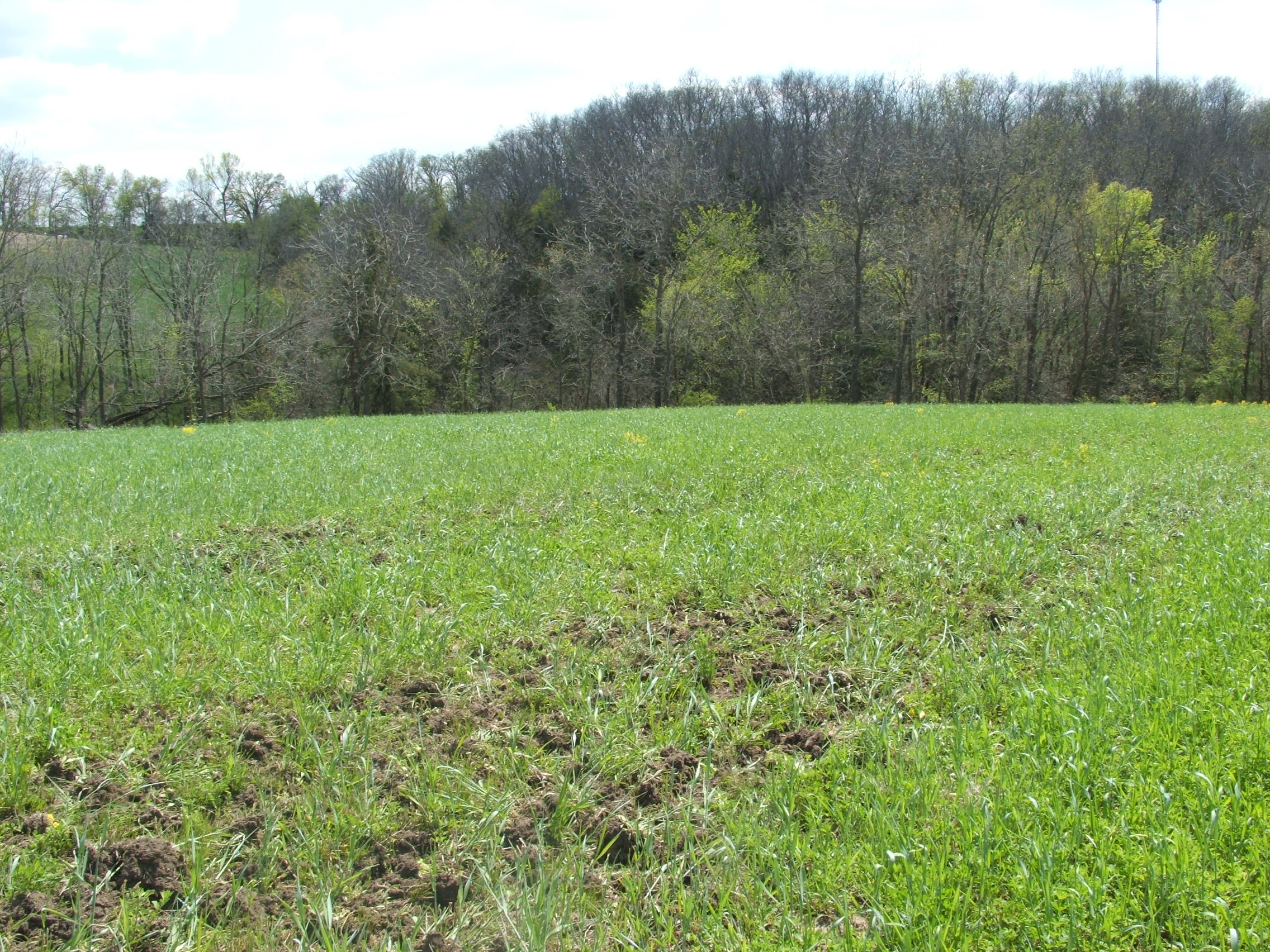
This photo taken spring 2015. This field was winter rye coming up that was overseeded into soybeans last fall. We quacked (you can also disc) up the field to get it ready for the seed. Notice the winter rye is not completely tilled….we only till enough to work in the seed. This is after one pass with a quack digger…at this point we’ll spread seed and fertilizer.
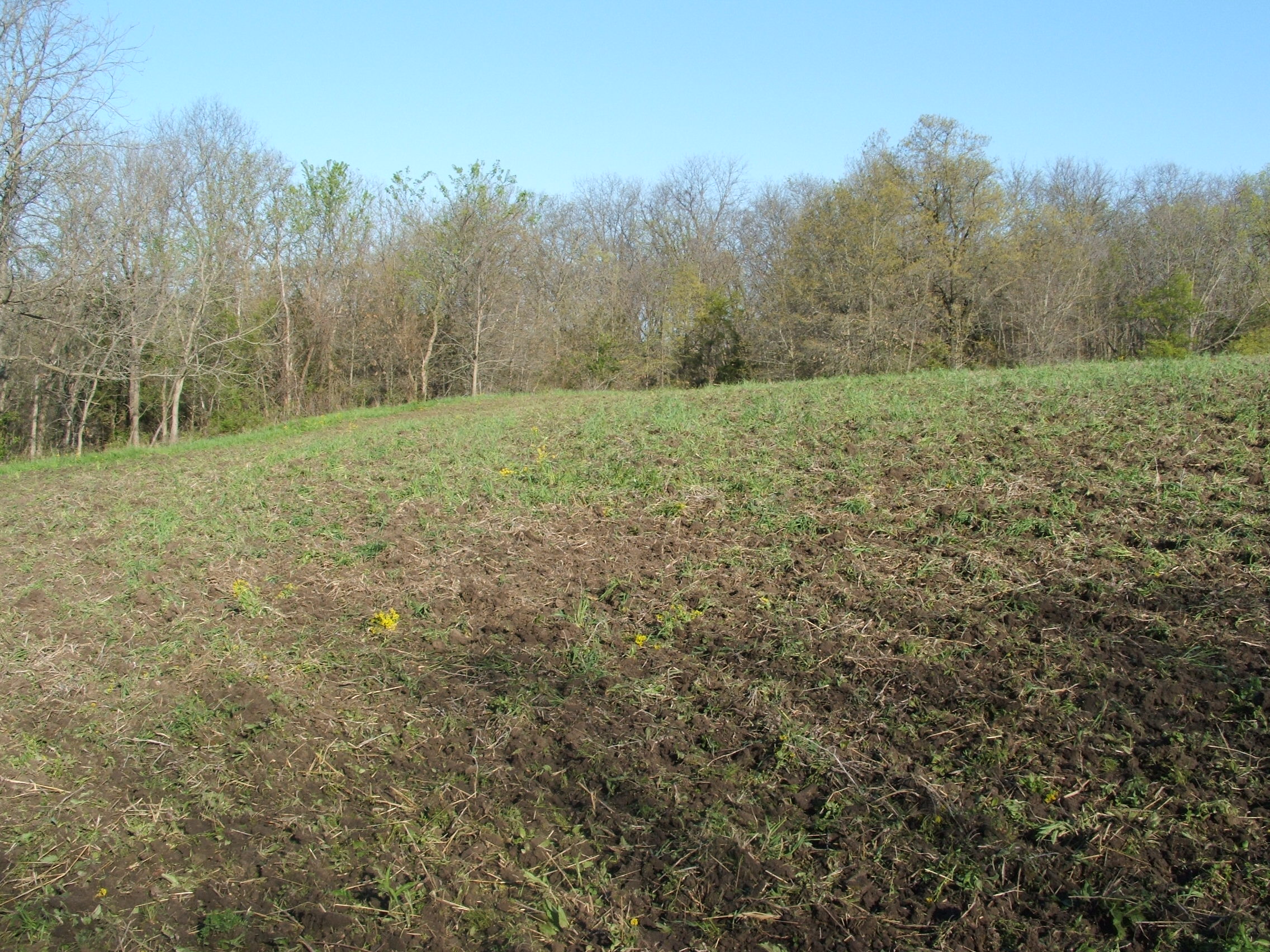
After the seed and fertilizer is spread, we’ll go over again with our disc to cover the seed. Notice the winter rye is still there…it might be set back a bit but it will come back right with the soybeans. This is about the MOST you would want to work up the ground and still expect the winter rye to grow back with the germinating soybeans. We don’t cultipack we just disc in the seed.
Step 2. In about 3-4 weeks, spray the beans with your herbicide. Assuming you have used roundup ready beans, I used about 1 quart per acre of glyphosate at spraying. The beans and weeds should be about 3 inches tall or so.
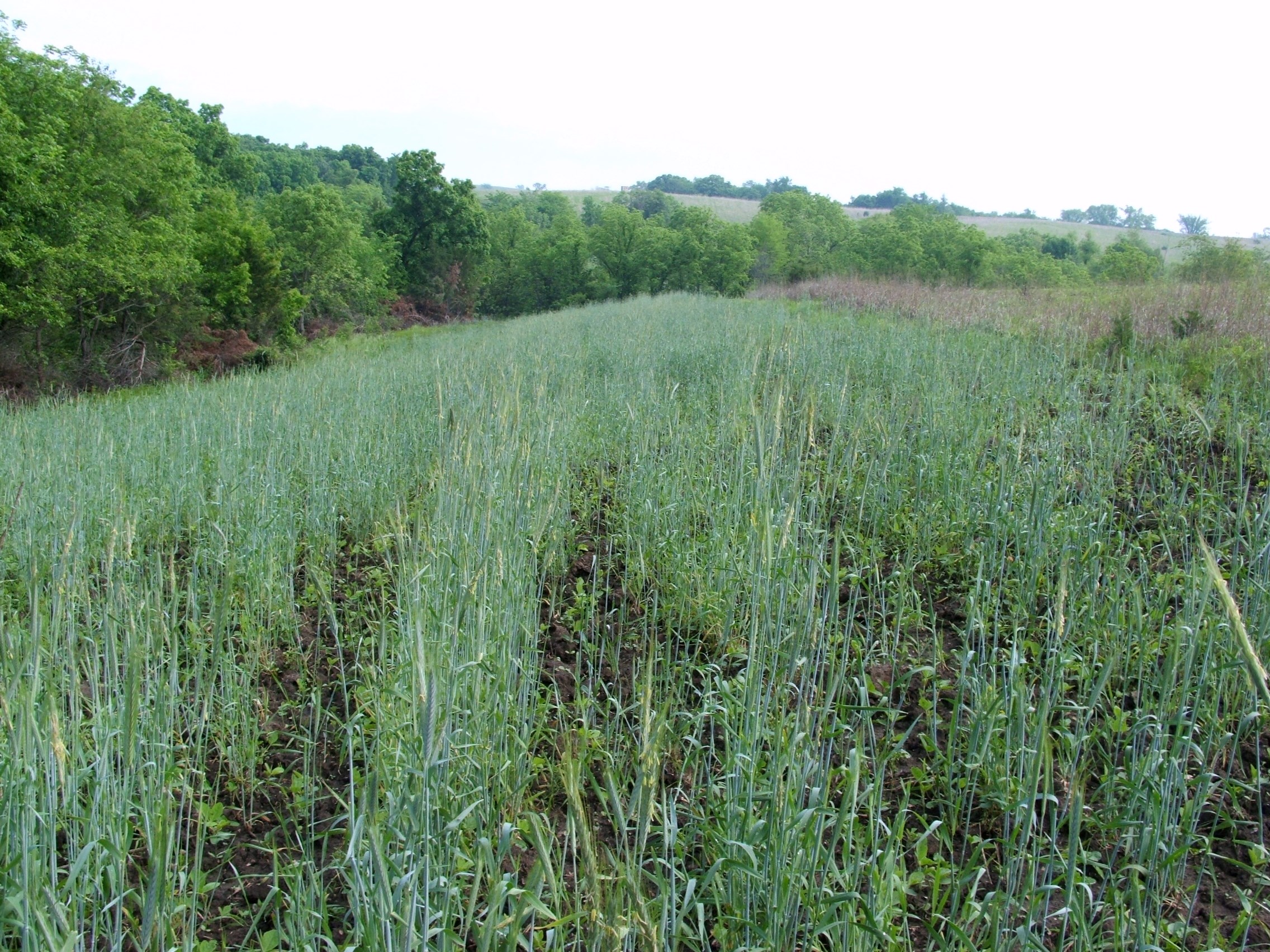
In about 3-4 weeks after planting, you can see the beans are coming up just fine and the winter rye has also come up providing “cover” for the soybeans. Now is the time to spray. The winter rye will get killed by the spraying along with any weeds. Note…not many weeds!!!
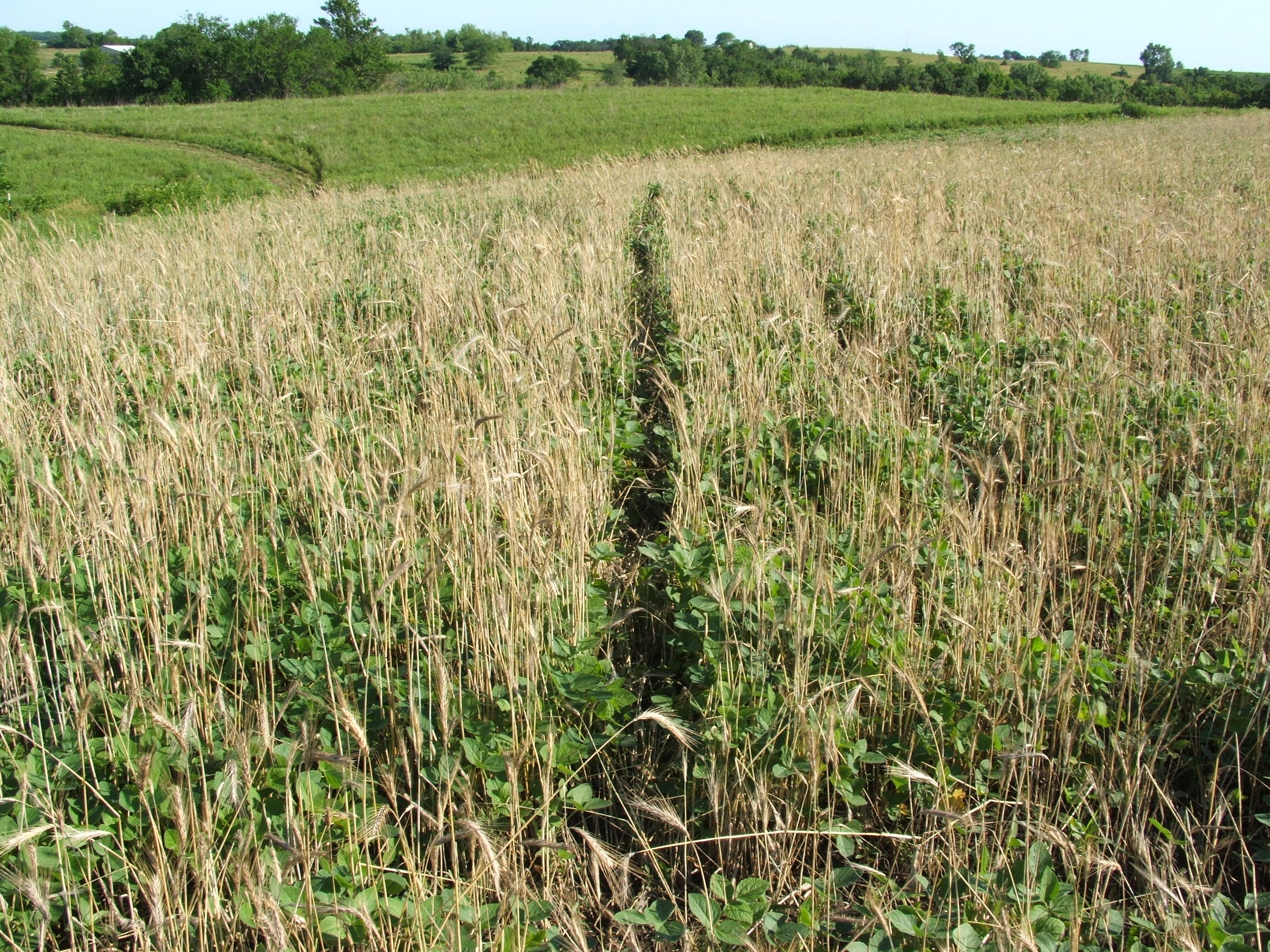
A couple weeks after the first spraying…notice the soybeans are exploding in growth. The winter rye has been killed off along with any weeds. In a few more weeks you won’t even notice any remaining remnants of the winter rye but it has done it’s job.
Step 3. Follow up with another spraying in another 4-6 weeks or so if weeds are still present.

Same beans as picture before several weeks later. The rye has been killed off with the glyphosate and the beans look great. No weeds in this plot so a second spraying is not necessary.
Step 4. In mid August or so, start watching your beans for them to start yellowing…as soon as you see them start yellowing, overseed with the winter rye at about 50 pounds per acre. Use winter rye…not rye grass or winter wheat. (Reasons in another article) Overseeding is simply broadcasting the winter rye right over the top of the beans with a spreader or by hand. Don’t worry about the beans you run over if using a spreader. No need for tillage or anything…the winter rye will germinate and grow with a rain. Winter rye can be overseeded or established as a food plot as late as mid October. The winter rye will grow right as the soybeans mature.
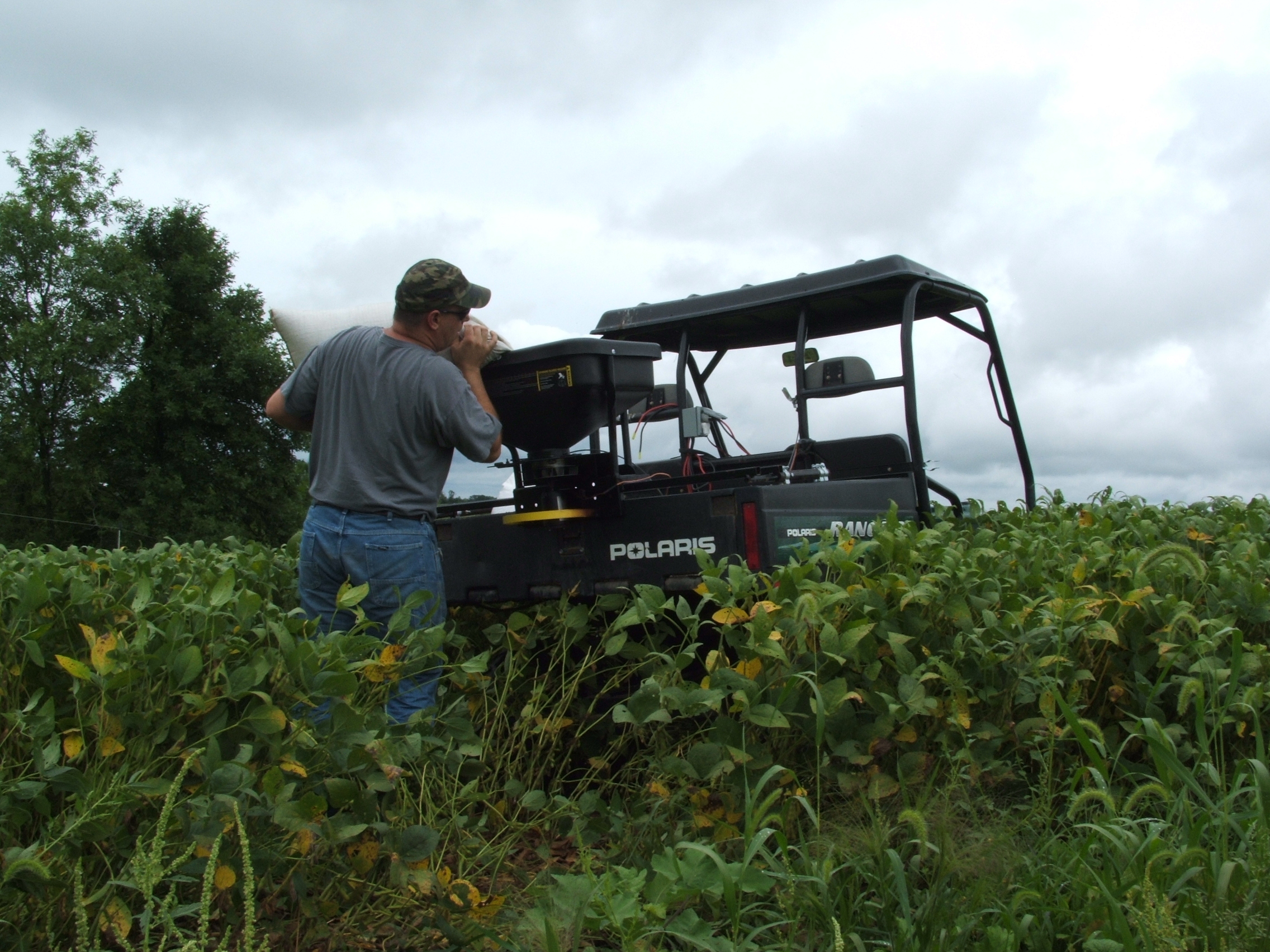
As the beans start to yellow as early as later in August, overseed with winter rye. Here, I’m using a spreader on my Ranger. Don’t worry about the beans you run over. You can also just throw out the winter rye seed by hand. Overseed in late August as the leaves turn yellow. Yellowing leaves are the trigger…you can overseed as late as mid October. No need for any kind of tillage, the winter rye will germinate with a rain.
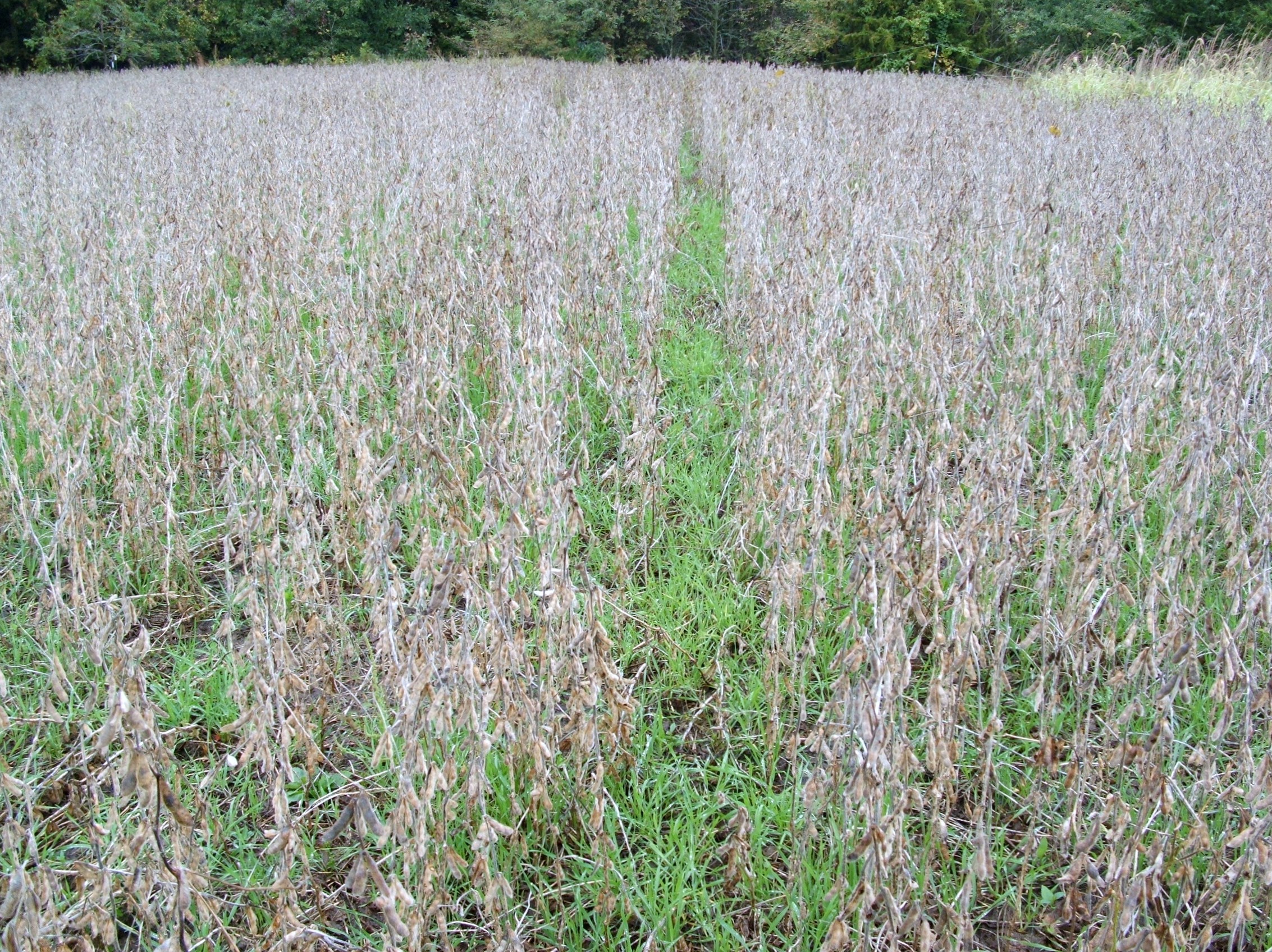
Here, you can see a few weeks after the overseeding the winter rye is coming in strong starting or completing the cycle all over again. The rye will stay green all winter and provide a food source long after the beans are gone.
Step 5. In the spring, the winter rye will come up strong as it has stayed green and provided food all winter long. I like to plant my soybeans in the mid-west in late April to early May. At planting time, use a quack digger or your disc again to bust up the ground. You don’t necessarily want the ground completely tilled or you will kill the winter rye…just work the ground enough so that after you spread your soybean seed/fertilizer you can cover the seed again like in step 1. The winter rye will be knocked back but as long as you haven’t deep tilled it will come right in with the germinating soybeans.
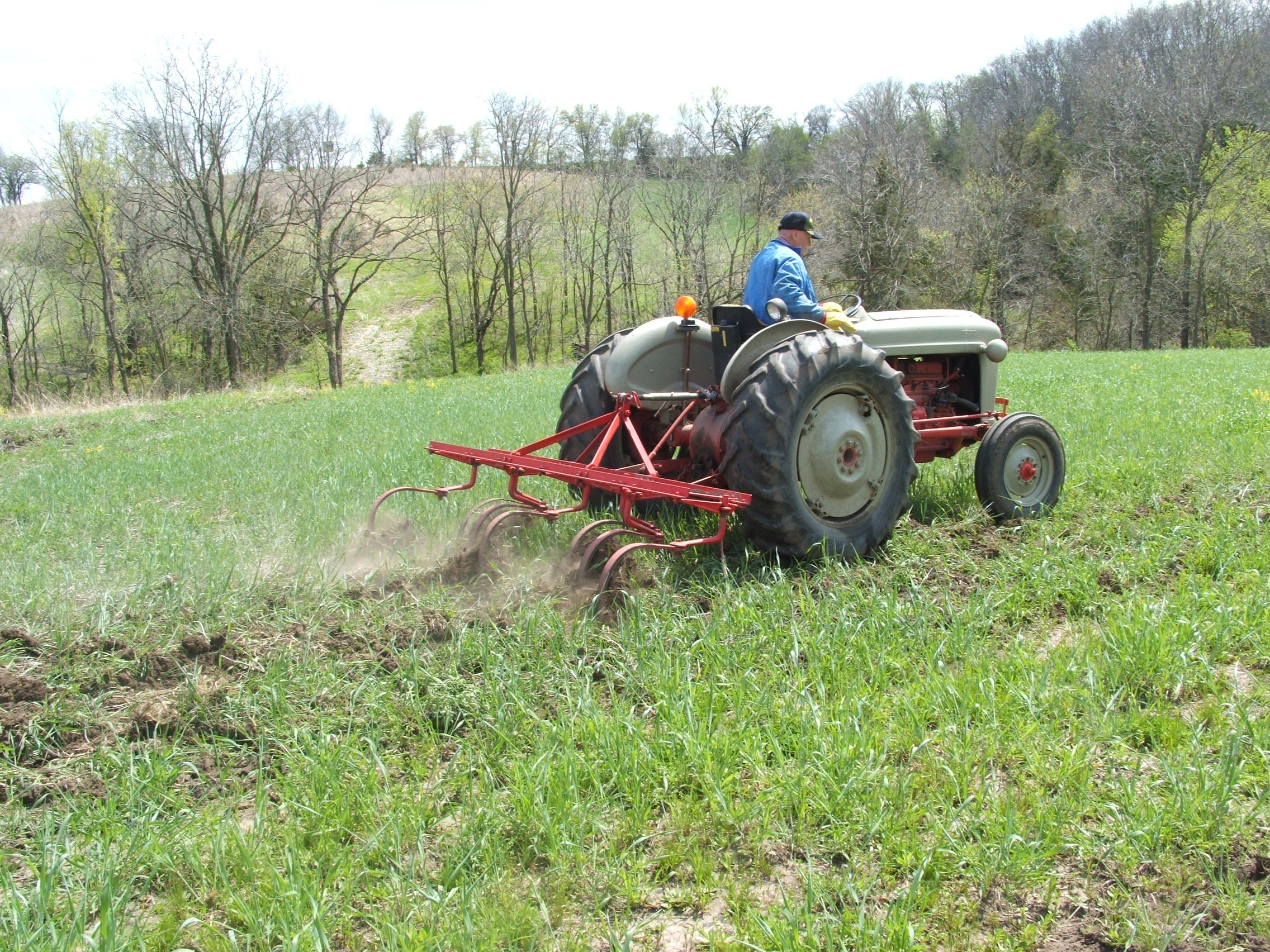
In the spring, the cycle starts all over again. Here my dad is using a quack digger to bust up the ground for yet another planting of soybeans in winter rye.
Step 6. Spray in 3-4 weeks like in step 2 and the process continues. The winter rye will get killed off along with any weeds…but you’ll notice way less weeds due to the rye’s weed inhibiting ability.
This is a year long never ending food source. The winter rye is a great green manure and helps greatly with weeds due to its weed inhibiting properties. It also acts as a cover to help protect the soybeans when they are young. In the late fall and winter, after the beans have been consumed, the winter rye stays green and continues providing a food source.
